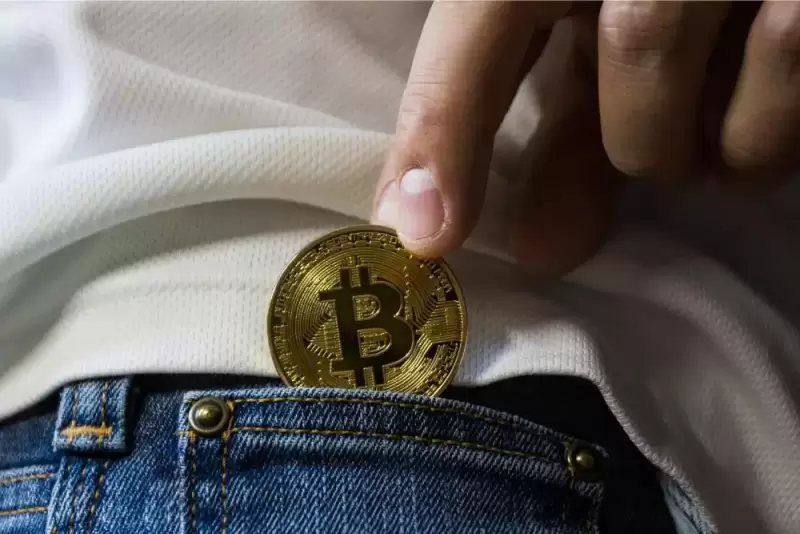 |
|
 |
|
 |
|
 |
|
 |
|
 |
|
 |
|
 |
|
 |
|
 |
|
 |
|
 |
|
 |
|
 |
|
 |
|
本文解釋了玻利維亞嚴格的加密貨幣禁令到採用規範數字資產的旅程。
The Bolivian financial system has traditionally been characterized by strict monetary controls, with the Banco Central de Bolivia (BCB), the central bank, enforcing stringent regulations to prevent financial instability. This cautious approach led to Bolivia standing out in Latin America as one of the few nations with an outright ban on cryptocurrency usage.
傳統上,玻利維亞金融體係以嚴格的貨幣控制為特徵,中央銀行的Banco Central de Bolivia(BCB),執行嚴格的法規以防止金融不穩定。這種謹慎的方法導致玻利維亞在拉丁美洲脫穎而出,成為少數幾個國家之一,完全禁止加密貨幣使用。
However, the burgeoning adoption of digital currencies within the region, notably in Argentina, Brazil and El Salvador, pressured Bolivian authorities to reconsider their stance on crypto adoption.
但是,該地區內部的數字貨幣迅速採用,尤其是在阿根廷,巴西和薩爾瓦多,迫使玻利維亞當局重新考慮其對加密貨幣的立場。
This article provides an overview of the journey from Bolivia’s strict cryptocurrency ban to its adoption of regulated digital assets. It explains the historical context of the 2014 ban, the reasons behind it, and how global trends, economic pressures and technological advancements led to the 2024 shift in policy.
本文概述了玻利維亞嚴格的加密貨幣禁令到採用規範數字資產的旅程。它解釋了2014年禁令的歷史背景,其背後的原因以及全球趨勢,經濟壓力和技術進步如何導致2024年政策的轉變。
Bolivia lifts crypto ban: What led to the policy shift?
玻利維亞舉起的加密禁令:是什麼導致了政策轉變?
By June 2024, the Bolivia crypto ban was withdrawn, a move that was surprising to many but signaled a significant regulatory shift. The BCB announced this policy change in Board Resolution N°082/2024, which also stipulated that cryptocurrency transactions would be allowed only through authorized electronic means and in accordance with applicable legislation and regulations.
到2024年6月,玻利維亞加密禁令被撤回,這一舉動令人驚訝,但標誌著明顯的監管轉變。 BCB宣布了董事會決議N°082/2024的政策變更,該決議還規定,僅通過授權的電子方式並按照適用的立法和法規允許加密貨幣交易。
This policy change was driven by multiple factors:
這種政策變化是由多種因素驅動的:
With these changes, Bolivia’s digital currency policy has entered a new phase, allowing controlled access to cryptocurrencies within a framework of governmental oversight.
通過這些變化,玻利維亞的數字貨幣政策進入了一個新階段,從而在政府監督的框架內可以控制地訪問加密貨幣。
The Bolivian government’s calculus appears to be shifting in response to both internal and external pressures, setting the stage for an interesting chapter in the country’s financial history.
玻利維亞政府的微積分似乎在響應內部和外部壓力方面正在轉移,這為該國財務歷史上有趣的一章奠定了基礎。
Bolivia’s crypto policy evolution, explained
玻利維亞的加密政策進化,解釋說
The evolution of Bolivia’s cryptocurrency policy was influenced by several factors, including economic necessity, technological progress and regional regulatory trends. The following sections provide a closer look at the historical context, major policy shifts and the implications of these changes.
玻利維亞加密貨幣政策的演變受到多種因素的影響,包括經濟必要性,技術進步和區域監管趨勢。以下各節仔細研究了歷史背景,重大政策的變化以及這些變化的含義。
Historical context: The 2014 ban
歷史背景:2014年禁令
In 2014, the Bolivian cryptocurrency laws explicitly prohibited the use of any digital asset not issued by the Bolivian government. The BCB justified this decision by stating that cryptocurrencies posed risks to financial stability, consumer protection and the macroeconomic framework.
2014年,《玻利維亞加密貨幣法》明確禁止使用玻利維亞政府發行的任何數字資產。 BCB證明了加密貨幣為金融穩定,消費者保護和宏觀經濟框架帶來風險。
At the time, Bolivia’s approach to crypto regulation was among the strictest in the world, differentiating it from other Latin American nations, where regulatory uncertainty was more common than outright bans.
當時,玻利維亞對加密監管的方法是世界上最嚴格的法規之一,將其與其他拉丁美洲國家區分開來,那裡的監管不確定性比徹底的禁令更普遍。
Mid-period adjustments: 2020-2022 restrictions
中期調整:2020-2022限制
Despite the Bolivia crypto ban, public interest in digital assets and global developments led to a partial policy shift in 2020. The BCB issued Resolution No. 104, which limited the scope of the cryptocurrency ban by focusing on instruments not authorized for payment services.
儘管禁止了玻利維亞加密貨幣,但公眾對數字資產和全球發展的興趣導致了2020年的部分政策轉變。 BCB發布了第104號決議,這限制了無需授權支付服務工具的加密貨幣禁令的範圍。
This signaled a move towards acknowledging the potential of digital assets while remaining cautious about their integration into the existing financial system.
這表明,朝著承認數字資產的潛力的同時保持謹慎的態度,同時對它們集成到現有金融體系中。
The BCB also issued a statement warning institutions against offering financial services with cryptocurrency without the necessary authorization, further indicating the government's vigilance in monitoring and controlling any attempt to use cryptocurrencies for purposes that fell outside of the legal framework.
BCB還發表聲明警告機構,不要在沒有必要的授權的情況下以加密貨幣提供金融服務,進一步表明政府在監視和控制使用加密貨幣的任何嘗試以屬於法律框架之外的目的而保持警惕。
This period also saw a crackdown on pyramid schemes, which was covered in Law No. 597 on Multilevel Marketing. The law aimed to prevent scams and protect consumers, highlighting the government's priority to maintain financial stability and consumer confidence.
這一時期還對金字塔方案進行了鎮壓,該計劃在多層次營銷方面的法律第597號涵蓋。該法律旨在防止騙局和保護消費者,強調政府的優先事項,以維持財務穩定和消費者的信心。
Turning point: Lifting the ban in 2024
轉折點:取消2024年禁令
By mid-2024, Bolivia made a surprising reversal. The Bolivia crypto legalization effort was formalized with the Board Resolution N°082/2024, which repealed the previous bans and allowed cryptocurrency transactions under regulated conditions.
到2024年中,玻利維亞做出了令人驚訝的逆轉。玻利維亞加密合法化工作是通過董事會決議N°082/2024正式製定的,該決議廢除了先前的禁令,並允許在受監管條件下進行加密貨幣交易。
The resolution, which came into effect on June 18, 2024, granted authorization for cryptocurrency transactions through authorized electronic means and in accordance with the provisions of Law No. 133, rendering it clear that cryptocurrency transactions would be subject to existing legal and regulatory frameworks.
該決議於2024年6月18日生效,通過授權的電子方式授予了加密貨幣交易的授權,並按照第133號法律規定清楚地表明,加密貨幣交易將遵守現有的法律和法規框架。
This signaled a shift in the government's thinking, moving away from an outright ban to a more nuanced approach that balances innovation with risk management.
這表明政府的思想發生了變化,從徹底的禁令轉變為平衡創新與風險管理的更細微的方法。
The BCB’s press release announcing the new cryptocurrency policy highlights the central bank's role in monitoring and regulating financial institutions and payment service providers to ensure compliance with the legal framework.
BCB宣布新的加密貨幣政策的新聞稿強調了中央銀行在監視和規范金融機構和支付服務提供商中的作用,以確保遵守法律框架。
This signals that the government will be actively involved in overseeing the integration of cryptocurrencies into the existing financial system.
這表明政府將積極參與監督加密貨幣與現有金融體系的整合。
Status as of March 2025
截至2025年3月的狀態
As of March 2025, the country has moved toward a structured regulatory framework:
截至2025年3月,該國已轉向一個結構化的監管框架:
The country's journey from a strict cryptocurrency ban to a regulated market has been influenced by several factors.
該國從嚴格的加密貨幣禁令到受管制市場的旅程受到了幾個因素的影響。
The pressing need for financial innovation solutions, fueled by a dollar shortage and the underwhelming results of the SUCRE regional currency project, appears to have motivated the government to explore new avenues for economic growth.
在美元短缺以及Sucre地區貨幣項目的巨大結果的推動下,對金融創新解決方案的迫切需求似乎激發了政府探索新的經濟增長途徑。
Moreover, the burgeoning adoption of cryptocurrencies in neighboring countries, particularly in Argentina and
此外,在鄰國,特別是在阿根廷和
免責聲明:info@kdj.com
所提供的資訊並非交易建議。 kDJ.com對任何基於本文提供的資訊進行的投資不承擔任何責任。加密貨幣波動性較大,建議您充分研究後謹慎投資!
如果您認為本網站使用的內容侵犯了您的版權,請立即聯絡我們(info@kdj.com),我們將及時刪除。
-

-

- 模因硬幣空間再次嗡嗡作響,這一次,不僅僅是關於狗,貓或青蛙
- 2025-04-09 02:45:13
- 輸入Dragoin($ ddgn) - 呼吸呼吸競爭者,將幻想,樂趣和功能帶到區塊鏈中。
-

- CELO從1層鏈到以太坊層2方案過渡
- 2025-04-09 02:40:13
- Celo在3月26日X帖子中宣布了成功的過渡,並指出“ Celo是正式的以太坊第2層”協議。
-

- Binance從做市商那裡凍結了3800萬美元,該公司售出了6600萬個移動(移動)令牌
- 2025-04-09 02:40:13
- Binance從一家營銷商那裡凍結了3800萬美元
-

-

-

- 加密貨幣週二與全球市場的趨勢一致反彈。
- 2025-04-09 02:30:13
- 總體加密市值在一夜之間上漲了4.7%,達到2.54萬億美元。與人工智能和大數據相關的加密貨幣共計7.2%。
-

- 加密市場經歷了特朗普的關稅宣言引發的大規模動盪
- 2025-04-09 02:30:13
- 四月目睹了加密貨幣市場中主要的動盪階段之一。根據Santiment的分析,自美國總統宣布獨家關稅以來
-

- Binance將於4月16日從其平台上劃出14個令牌
- 2025-04-09 02:25:12
- 投入:Binance計劃於4月16日從其平台上脫穎而出,以清除不符合加密貨幣交易所更嚴格上市要求的低質量項目。
























































